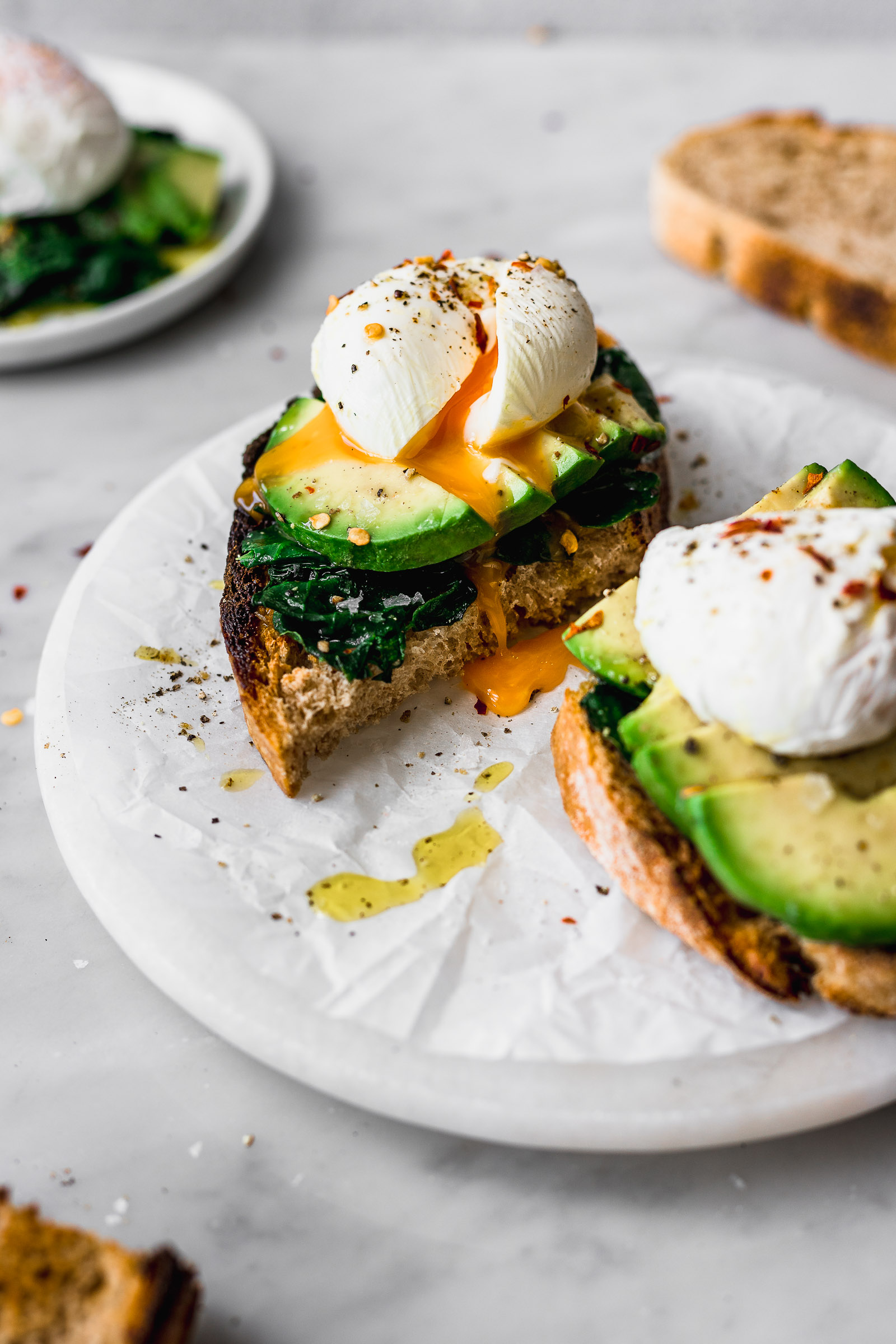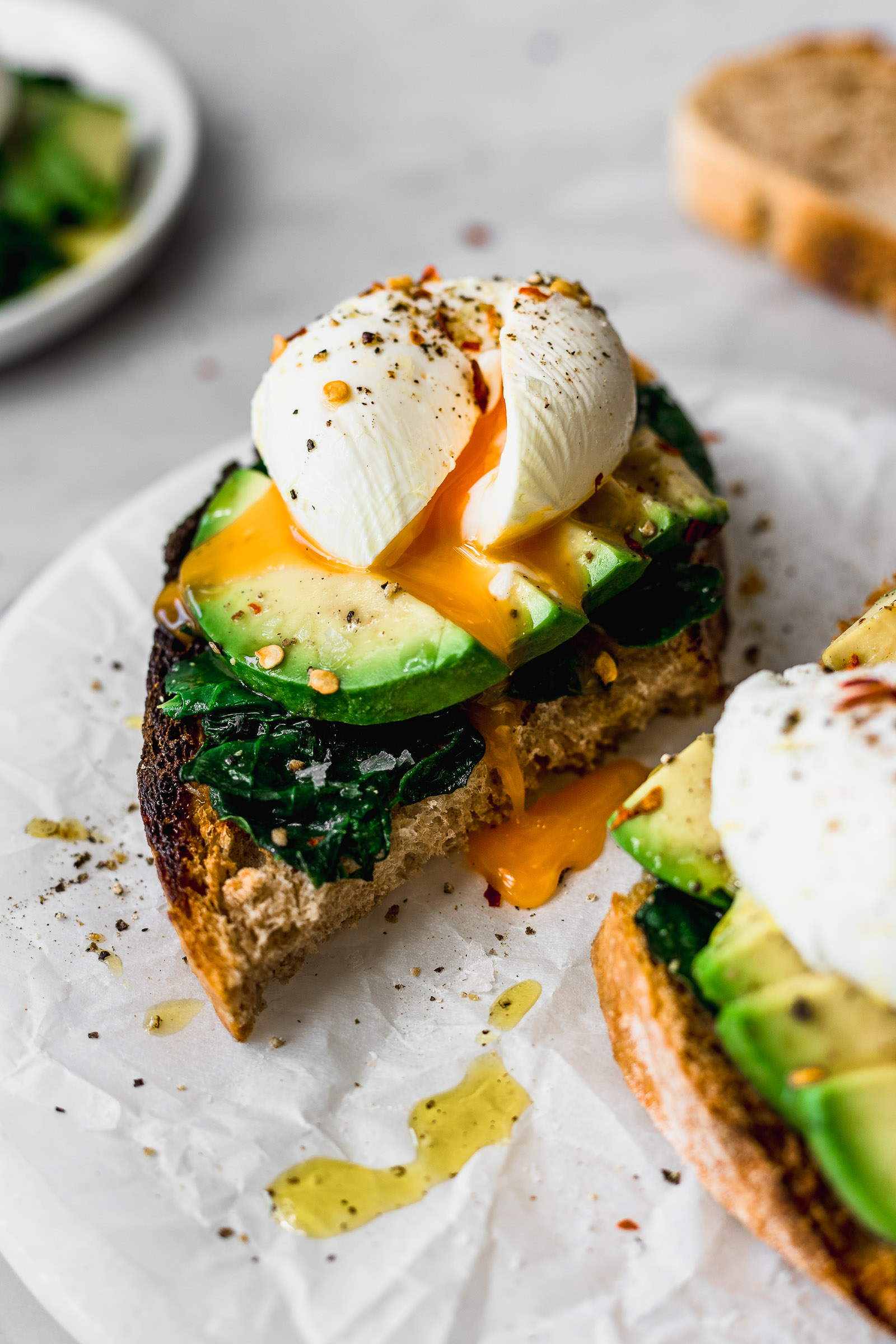I want to start by saying that I love this new basics section and I’m extremely happy that you guys are enjoying it, too! Amongst the things that I want to teach you, poached eggs were at the top of my list. I know that many people are scared of making poached eggs and I get it. However, the truth is that they’re not hard at all to make and here I’ll give you all the tips to get perfect results.
The eggs
You can certainly poach any egg but there are two factors that will make your job slightly easier:
1. The temperature of the egg: if the egg is cold, it will keep its shape nicer in the water. When an egg is at room temperature, the egg white is more liquidy.
2. Freshness: it’s easier to keep the shape of the egg in the water the fresher it is. As days go by, the protein in the egg white starts to change and it loosens up a bit.
This does not mean that you cannot poach room temperature or non-super-fresh eggs! It’s just a couple of tips to make your life easier, especially for that first time you go poach an egg.
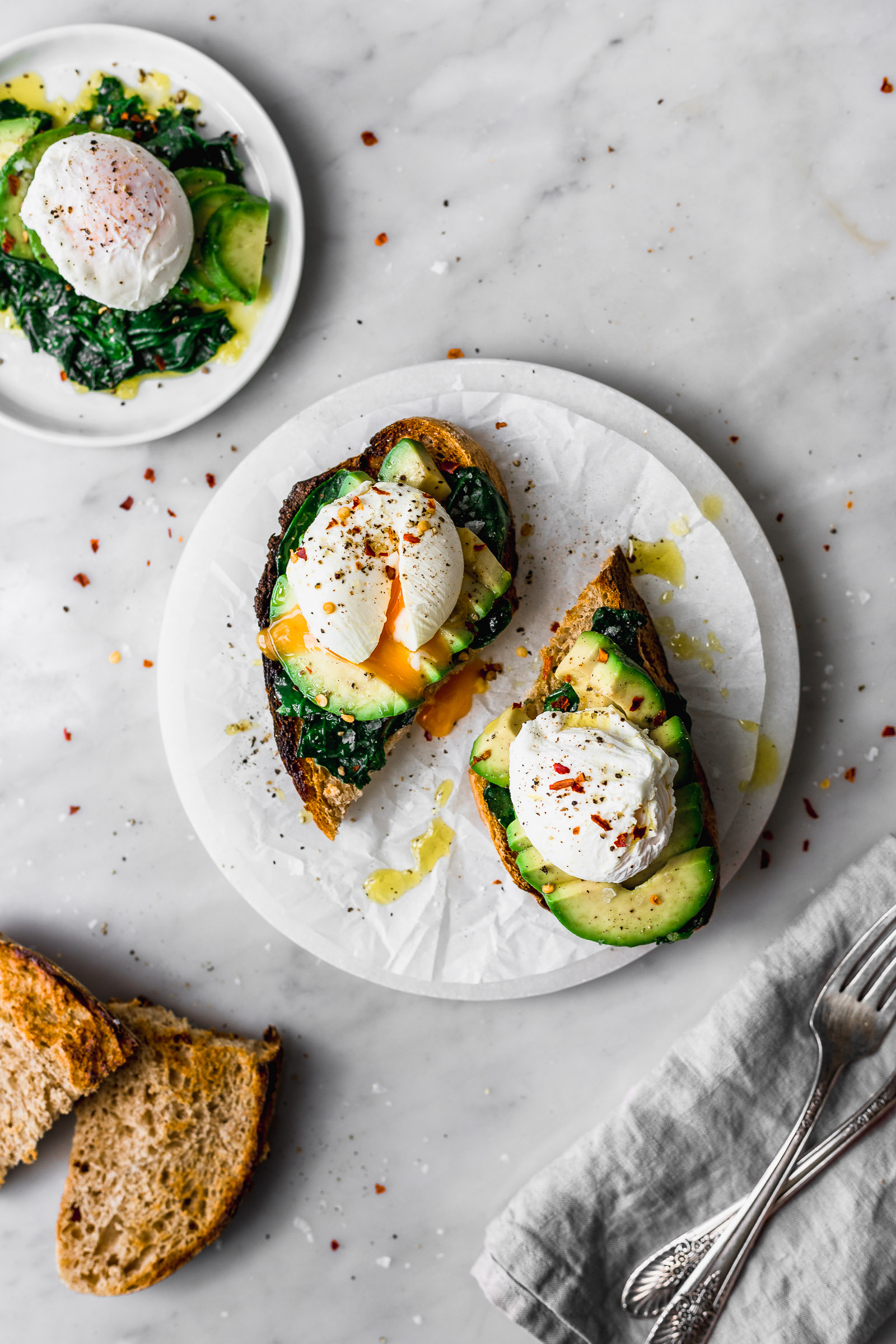
The technique
To make these poached eggs I don’t use any plastic film. It’s not necessary and we need to be more conscious and reduce the use of plastic in our kitchens to a minimum. The trick to make these is to mix vinegar into our poaching water. The vinegar accelerates the cooking process of the egg white. Thus, when the egg drops in, the outside of the egg will cook faster and do a better job at keeping its shape.
What’s important here is the amount of vinegar that you use; a “drizzle” is not enough and if you add too much it’s just wasteful. The ideal quantity is 15% of the amount of water. For that reason, you want to measure the amount of water in your pot (you can weigh it out or use a measuring cup) and multiply that amount by 0.15. That’s going to be the amount of vinegar that you need. I like to use apple cider vinegar but it can also be white wine vinegar. Avoid using red wine vinegar because it stains the eggs a weird colour. You cannot feel the taste of vinegar at all in the final product. However, if you’re really picky about it, you can rinse the egg in another pot with just hot water before serving.
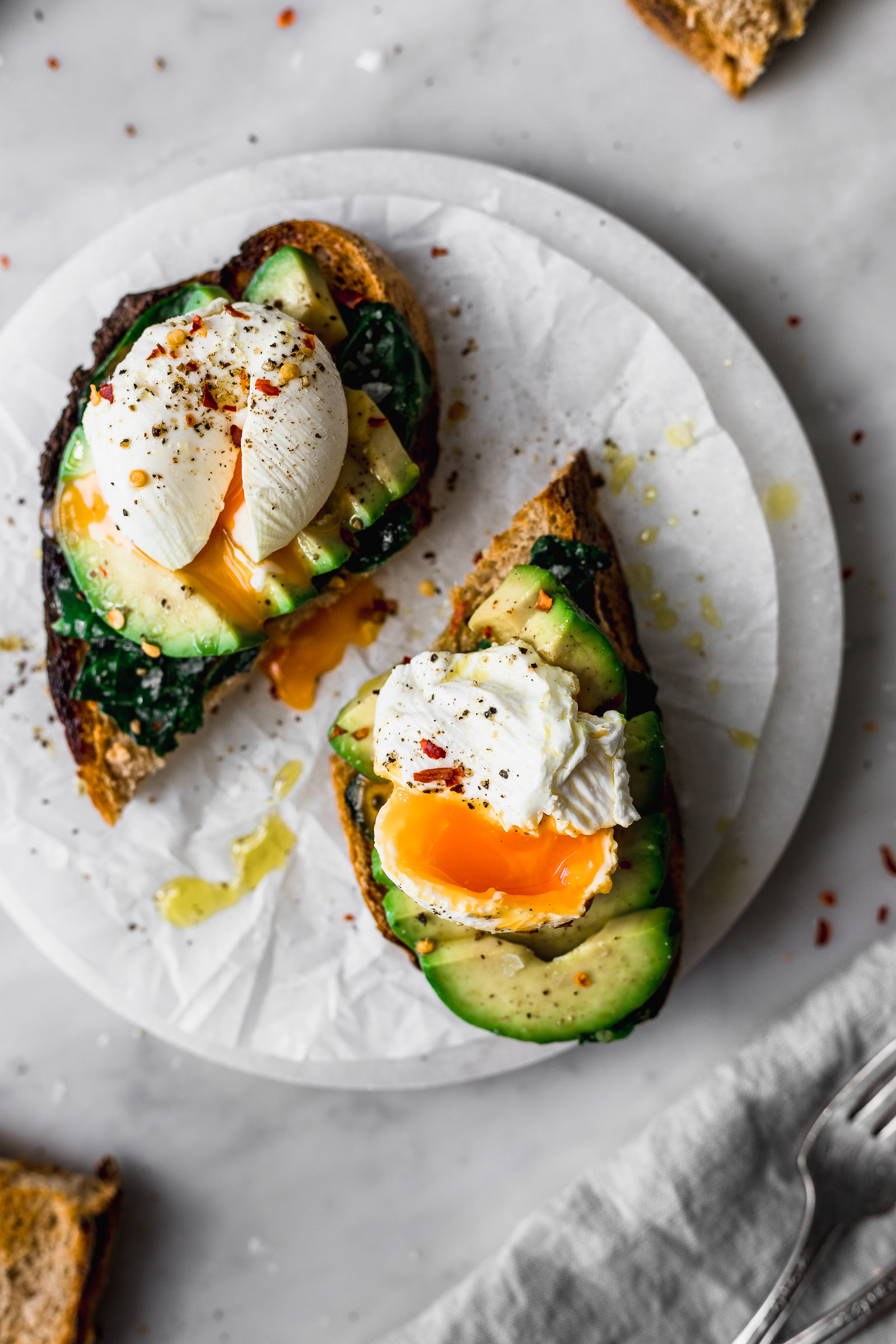
Uses
“OK, I know how to make poached eggs, now what?” Well, now you can have some for breakfast or brunch or WHENEVER you want! In this video, I served then with sautéed spinach and sliced avocado. It could also be with ham, lettuce, cheese or just buttered toasts. Also, if you love brunch, I recommend that you go see my eggs benedict recipe, which is my favourite brunch dish. Another amazing use of poached eggs is in salads, like in this warm roasted vegetable salad with smoked salmon and poached eggs. It’s also great in soups and pasta, like in this polenta with cherry tomatoes.
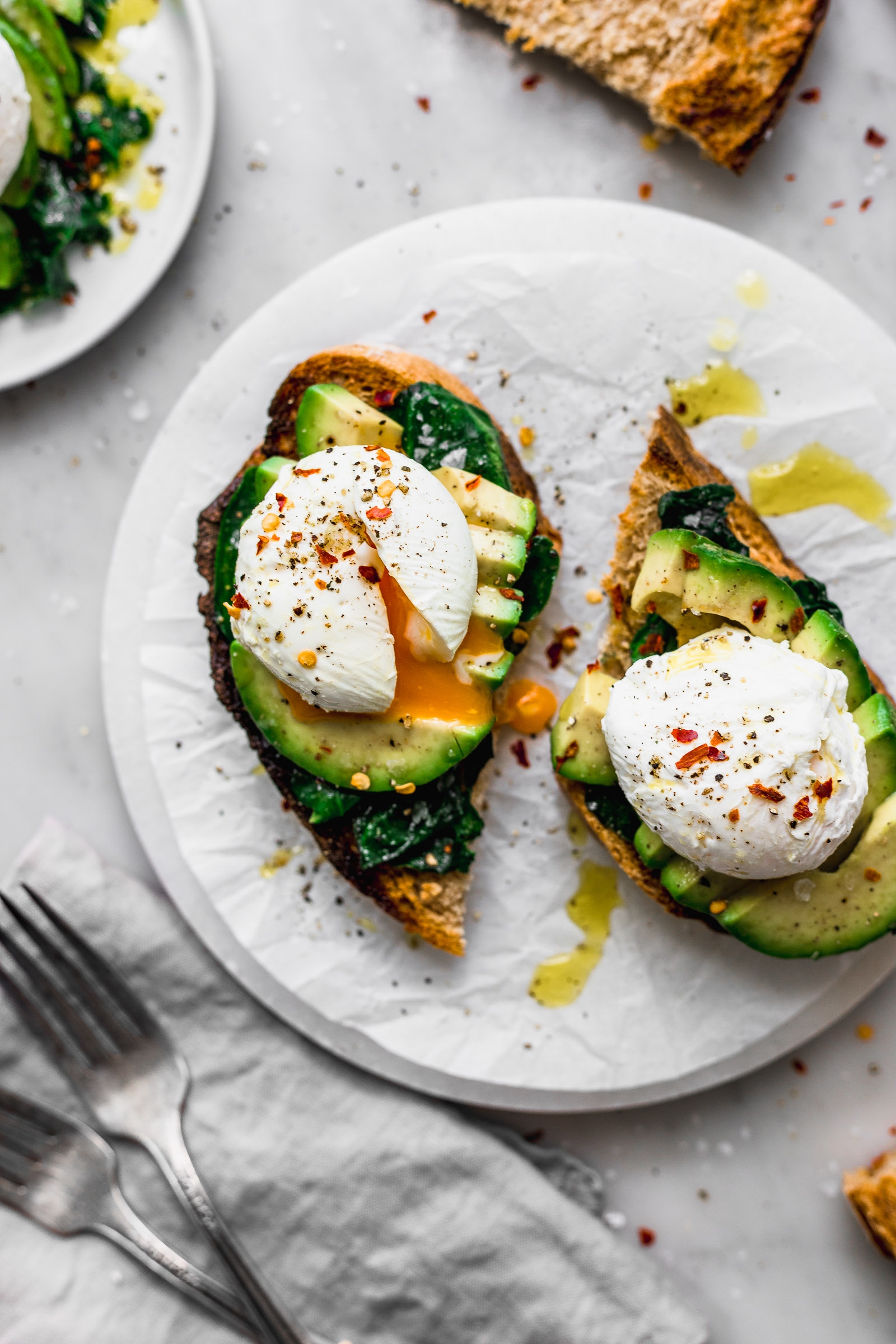
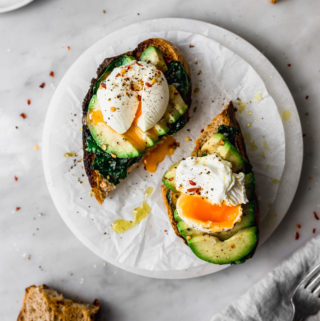
Ingredients
- 1 egg
- water
- apple cider vinegar or white wine vinegar the amount you want to use is 15% of the amount of water in your pot
Instructions
- Place the water and vinegar in a pot and bring it to a rolling boil.
- Open the egg into a small container or ramekin.
- Decrease the temperature of the water until the bubbles disappear.
- Make a whirlpool with a spoon. Bring the container with the egg close to the surface of the water and drop it in at once.
- Carefully, stop the whirlpool to prevent the egg from stretching out.
- Let it cook for 2-3min or until you can feel that the egg white is hard to the touch but the yolk is still liquid.
- Cut and discard the tail of egg white that forms when cooking. That's normal and it's formed by the more liquidy part of the egg white. Place the poached egg on a plate so it can let go of the excess water.
- Before poaching another egg, you need to bring the water back into a rolling boil before decreasing the temperature back down as we did before.

